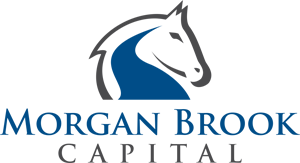When looking to invest in private equity, investors first need to understand the different kinds of deals that can fall under the umbrella of private equity. One of the most common types of private equity transactions is the leveraged buyout, which first became popular in the 1980s.
A leveraged buyout is the acquisition of a company largely using debt to finance the transaction. The firm performing the leveraged buyout provides only a portion of the overall financing for the purchase and leverages debt to complete the acquisition. During the 1990s, it was not uncommon for debt to account for up to 90 percent of a purchase, but today, most private equity firms use debt for about half of the purchase value to mitigate risk while still leaving space for an impressive return.
The point of a leveraged buyout is to generate a high return while risking a smaller amount of capital. Private equity firms expect that the return generated by the acquisition will be significantly greater than the interest paid on the debt, which maintains the high return.
Not all companies make good targets for a leveraged buyout. The purchaser needs to trust that the company will be able to maintain stability and pay off future debts. Otherwise, the company may default and go into bankruptcy, which results in a complete loss. Investors usually look for companies with a low level of current debt and strong cash flow that has remained stable. Other key factors to consider include any cycles in income, the experience of the management team, and the number of company assets, which serve as collateral for the debt.
What Is the Overall Strategy When It Comes to Leveraged Buyouts?
Various private equity firms will take different approaches to a leveraged buyout depending on overall comfort with risk. Some firms may prefer investing in distressed companies based in solid, growing industries. In this situation, the firms hope to turn around troubled companies and increase income to sell the company for a higher price in the future. Other firms may prefer purchasing an asset with already-stabilized growth to sell it at a higher price in the future. The returns for this latter strategy will not be as robust as with the former, but the level of risk is lower since the company is already performing adequately. With the turnaround approach, there is always the possibility that the revitalization will fail and the company will go bankrupt. In a bankruptcy, private equity firms lose their whole investment.
If a private equity firm does not plan to hold the company and let it continue operating as normal, it will undertake several initiatives for operational improvement. These initiatives can look quite different between transactions depending on the experience and expectations of the firm and the current situation of the acquired company. One of the most common strategies involves changing the management team and reconfiguring overall business goals. Firms may also sell off certain assets to increase cash flow or purchase new assets that can improve the performance of the core business. The overall goal is to increase the company’s valuation and/or profits.
What Happens to the Debt Leveraged to Make the Purchase?
One question that you may have when it comes to leveraged buyouts is what happens to the debt used to finance the purchase of a company. The debt used to purchase the business is always put on the books of the target company rather than the private equity firm, which is considered the sponsor in the transaction. If the company ultimately gets sold in the future, any amount of debt paid down in the interim becomes equity. Often, private equity firms will sell off parts of the target company to improve cash flow while also paying down some of the debt to build this equity. However, they may also choose to sell the company whole and use the income to pay off the debt while claiming the remainder of the sale price as income.
Another option is to use the internal cash flow of the business to pay off the debt over time and increase the return generated by the ultimate sale of the business. This approach can make sense if the acquired company already has good cash flow or the timeline for needing to sell an asset allows for several years of operation after the company gets back on solid footing. Private equity firms will often use projections to figure out which option makes the most sense for the given situation. If the company’s profits can pay down the debt and generate equity at a high enough rate, it makes sense to hold on to the company for as long as possible. However, if the value of the company should fall for some reason or the actual cash flow remains low, selling and using proceeds to cover debt repayment makes more sense.

